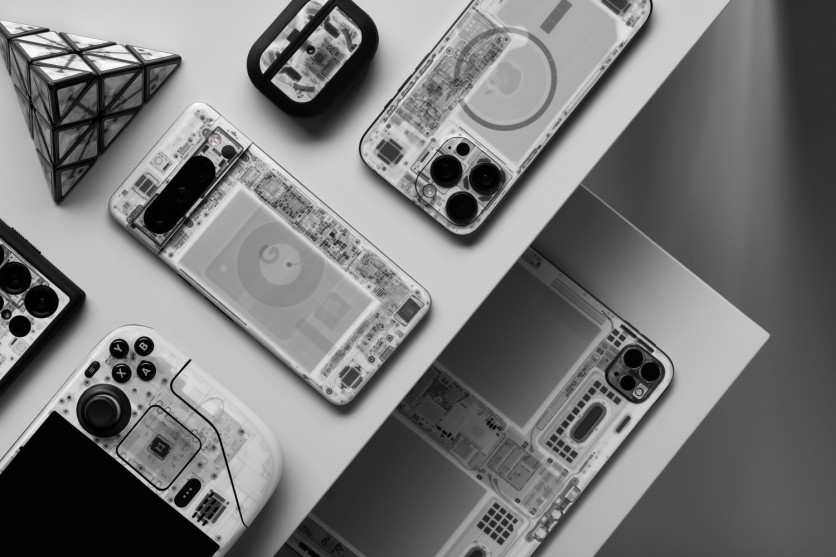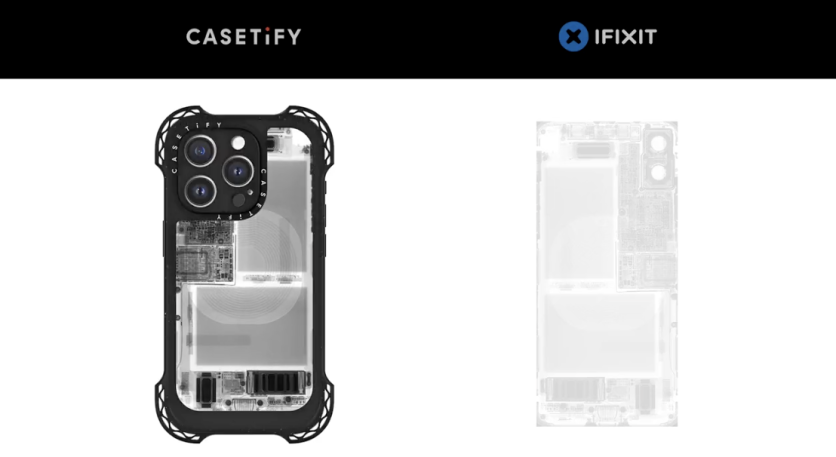The controversy surrounding the pilfered X-ray images has unfolded into a more expansive and absurd situation than initially perceived.

Accusing of iPhone X-Ray Theft Against Casetify
As a case manufacturer currently facing a legal challenge from Dbrand for allegedly stealing Apple device teardown visuals, The Verge reported that Casetify is now implicated in the unauthorized use of iFixit's X-rays of an iPhone sourced from Creative Electron.
Casetify's actions appear to be characterized by a lack of diligence, involving the rather simplistic approach of flipping an image depicting the internal components of an older iPhone and presenting it as the internal structure of the latest model.
A closer examination through comparisons reveals that Casetify employed an image of the 2017 iPhone X, obtained from the iFixit teardown page.
This unfolding controversy underscores the broader implications of intellectual property theft in the tech industry, bringing attention to the legal and ethical challenges faced by companies in safeguarding their proprietary images and information.
Facing Legal Threats from Dbrand
Dbrand finds itself embroiled in a legal dispute. The company has initiated a lawsuit against rival Casetify, alleging blatant replication of Dbrand's Teardown device skins and cases.

On the same day as announcing the lawsuit, Dbrand is also unveiling new X-Ray skins. This collection of skins and cases offers users the visual experience of a device stripped down to its internals, cleverly achieved through vinyl decals or cases that securely encase the phone.
While applying a decal to the back of your phone may seem straightforward, the intricate process of designing such decals involves meticulous effort. Using a high-grade scanning machine, the internal components are meticulously scanned and transferred to editing software.
In this digital realm, various adjustments are made, including the removal of screws, ribbon cables, and wires, along with repositioning components to ensure a seamless fit on the back of phones, laptops, or tablets before the prints are produced.
Allegedly, Casetify appropriated this labor-intensive process for its own phone cases. Within 24 hours of Dbrand making its lawsuit public, Casetify withdrew the contentious case lineup from its website, asserting its commitment to originality.
The dispute originated when Casetify introduced a similar line of phone cases named Inside Parts, featuring images of a device's internal components on the exterior. However, users soon noticed discrepancies in the designs.
In March, an observant user on X pointed out that Casetify seemed to reuse the same internal image across different phone models, compromising the accuracy of the representation of each device's internals.
Related Article : Tech Accessories Company dbrand Takes Legal Action Against Casetify Over Alleged Product Theft

![Apple Watch Series 10 [GPS 42mm]](https://d.techtimes.com/en/full/453899/apple-watch-series-10-gps-42mm.jpg?w=184&h=103&f=9fb3c2ea2db928c663d1d2eadbcb3e52)



